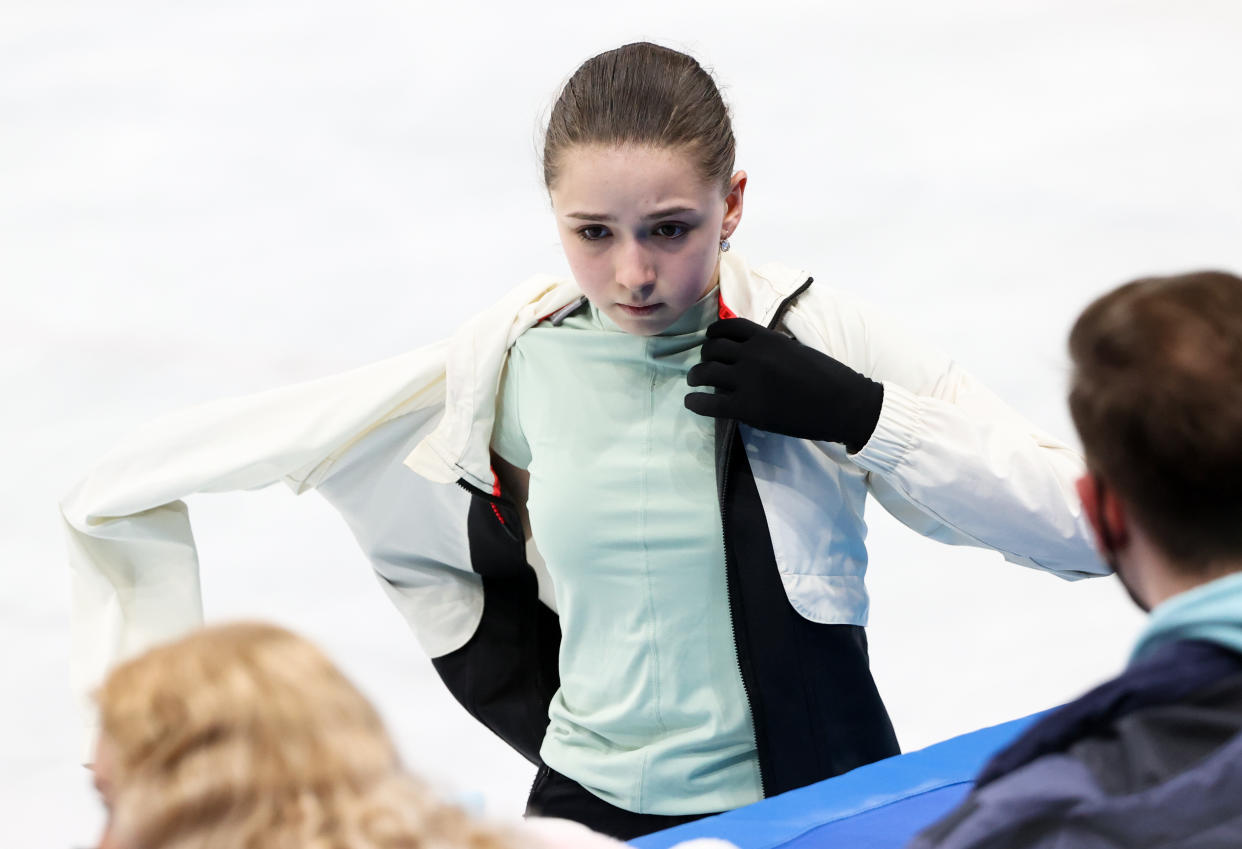'Serious questions’ raised about Kamila Valieva's ‘grandfather’ excuse
BEIJING — A document submitted by the World Anti-Doping Agency at Kamila Valieva’s hearing revealed that the Russian figure skater acknowledged taking two other substances similar to the one for which she tested positive, trimetazidine.
Neither of the other substances, L-carnitine and hypoxen, is banned. But Valieva’s use of them “raises serious questions,” U.S. anti-doping chief Travis Tygart said, about her explanation for her positive test — that her grandfather uses trimetazidine, and that she must have inadvertently ingested it.
Valieva and her team argued accidental use at a Feb. 9 hearing before the Russian Anti-Doping Agency. RUSADA lifted a provisional suspension, and the Court of Arbitration for Sport later decided not to impose one for the positive test, which stemmed from a sample submitted on Dec. 25 of last year.
Along with the sample, Valieva submitted a doping control form that declared use of three legal substances — supradyn, a multivitamin; L-carnitine, a chemical often found in heart supplements; and hypoxen, a drug that the U.S. Anti-Doping Agency has sought to ban in the past, Tygart said.
The latter two and trimetazidine, or TMZ, “are all aimed, essentially, at increasing endurance, reducing fatigue,” Tygart said.
Valieva’s mother testified at the initial hearing and said that Kamila took hypoxen to treat “heart variations,” according to the WADA document. But Kamila had never previously declared use of TMZ, which has been banned since 2014.
“The initial excuse,” Tygart said, “seems to be seriously undermined” by her use of the two legal substances — because it’s unlikely that the use of a third substance that serves a similar purpose would be accidental and coincidental.

When asked about the possibility that one of the permitted substances had been contaminated with TMZ, Tygart said that the amount of TMZ found in Valieva’s system — 2.1 nanograms per millileter — was roughly 200 times as much as was found in the sample of another athlete who previously proved contamination.
Tygart said, and expert witnesses summoned by Valieva’s team conceded, that the 2.1 nanograms were “actually very consistent with the tail end of an excretion,” if a full dose of TMZ had been taken days earlier.
WADA also pointed out in a legal filing, leaked via the Dossier Center, that “the athlete’s explanation does not involve a contaminated product. It involves some form of exposure to a medication that contained trimetazidine as an ingredient.”
Specifically, according to the filing, Valieva’s team argued at last week’s hearing that her grandfather used a TMZ-based heart medication. They presented a pre-recorded video from the grandfather, who showed a packet of the medication and said he used it “periodically,” per WADA.
Valieva’s mother said that her grandfather would accompany Kamila to training daily. But neither she nor anybody else mentioned a specific scenario in which Kamila would have ingested the substance.
CAS, citing the potential for “irreparable harm,” chose to allow Valieva to compete at the Olympics, but to ultimately win the case and clear her name, Valieva’s camp will have to demonstrate that the grandfather excuse is the “most likely” explanation.
At the moment, “there is inadequate evidence that her grandfather was even using trimetazidine,” WADA’s filing said.
Additionally, the presence of the two other substances used to improve heart function raise “a whole host of alarm bells that absolutely need to be investigated,” Tygart said. “Clearly somebody has taught her or coached her, directed her, to use these substances, and somebody's spending the money for them. And you only do that in a 15-year-old to try to increase [her] performance.”
Tygart said the possibility of Valieva’s grandfather’s medicine “going from a presumably sealed bottle in the bathroom medicine cabinet into her urine at a level of 2.1 nanograms” was a “long shot.”
“The denial,” he said, “is the common currency of the guilty and the innocent. … And that’s exactly why the context and the facts that are now being revealed are so critically important.”
